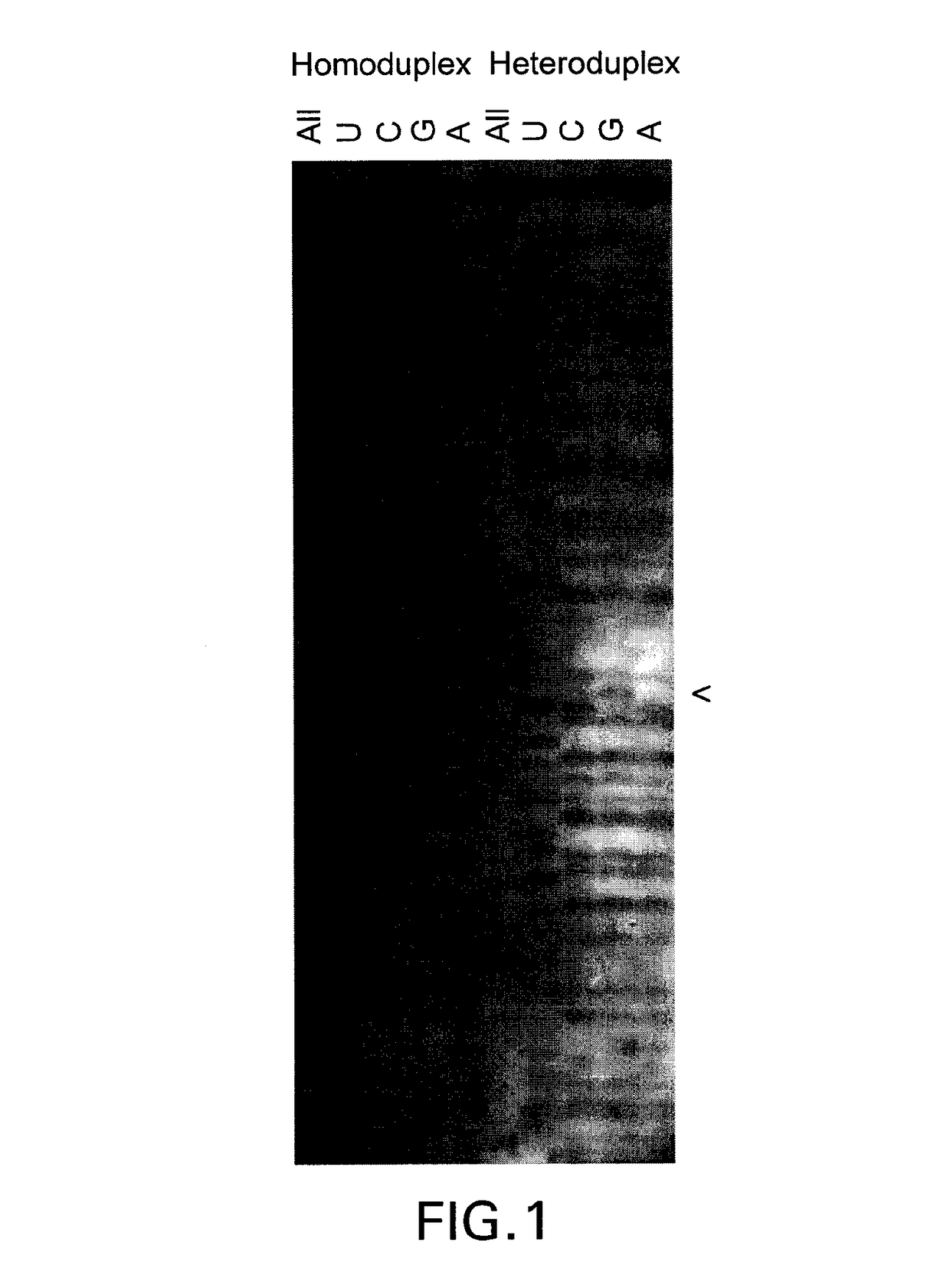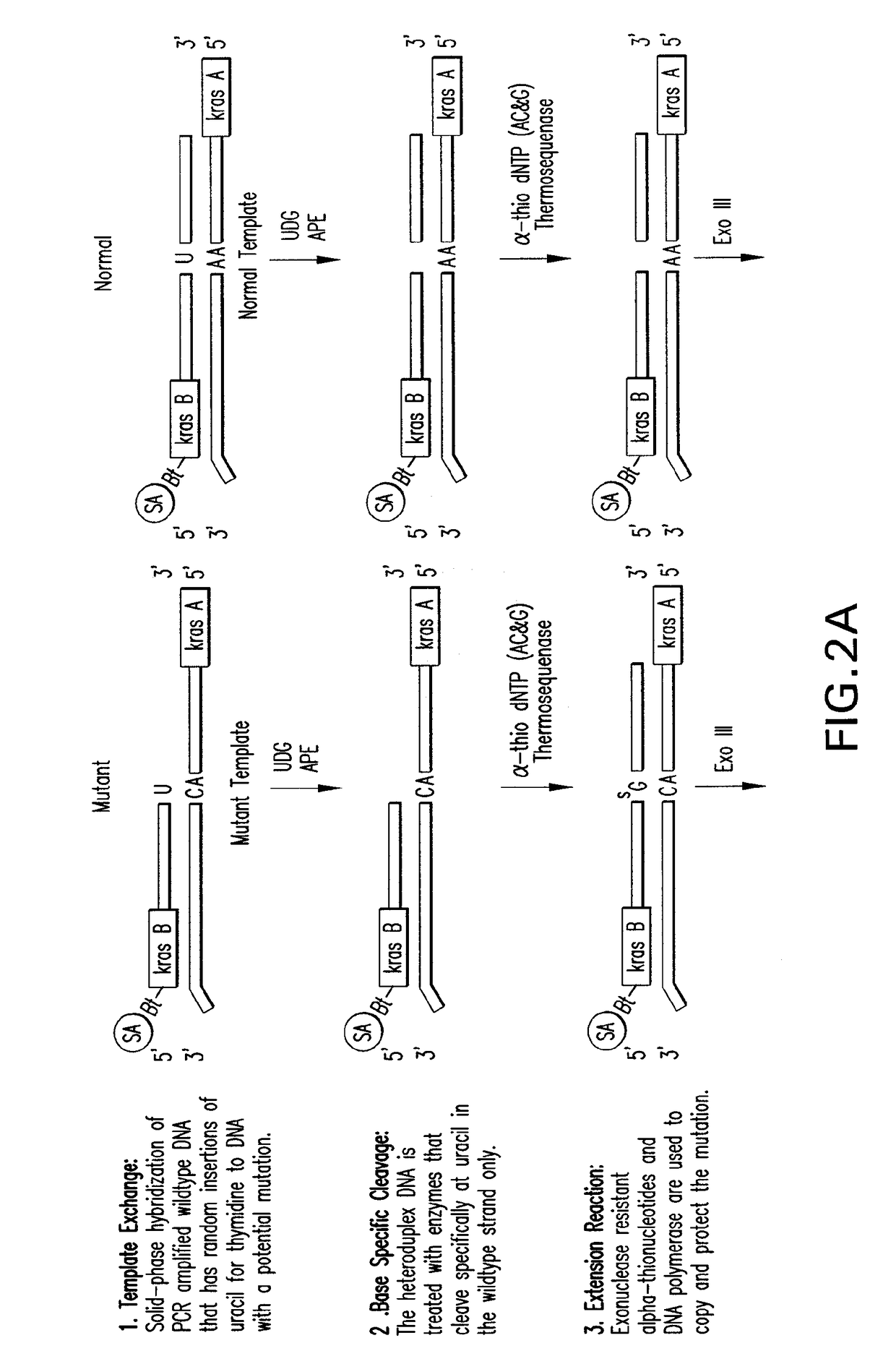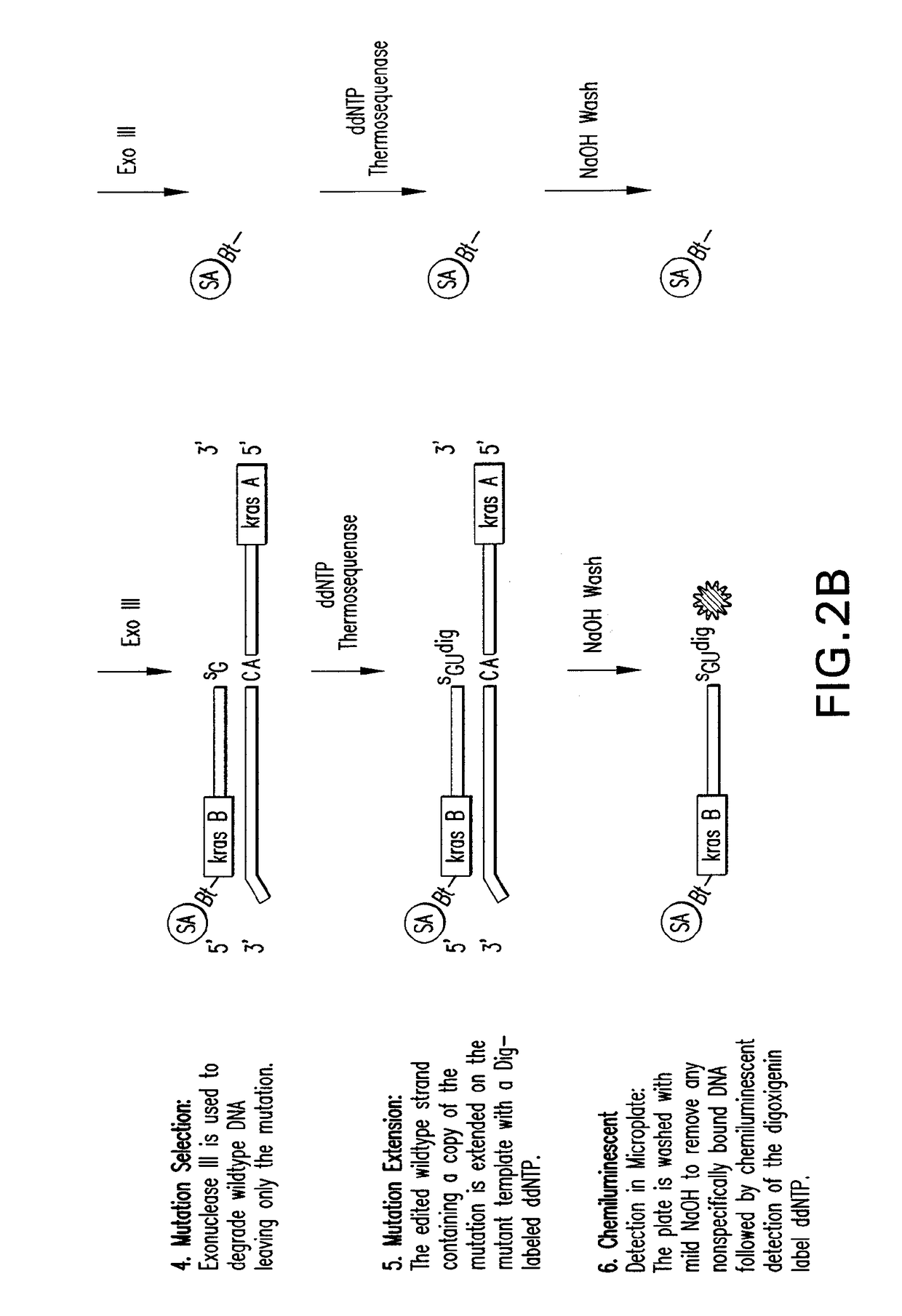Methods of screening nucleic acids for single nucleotide variations
a nucleotide and single nucleotide technology, applied in the field of single nucleotide variation screening methods, can solve the problem of limiting the identity of replacement nucleotides, and achieve the effect of rapid and sensitive detection
- Summary
- Abstract
- Description
- Claims
- Application Information
AI Technical Summary
Benefits of technology
Problems solved by technology
Method used
Image
Examples
example 1
A. Example 1
Template Exchange Extension Reaction (TEER)
[0138]Template Exchange Extension Reaction (TEER) refers to a class of methods that can compare an unknown or unsequenced nucleic acid template to a sequenced template to determine if they are identical. It is based on the fact that sequencing products are unique to the template from which they are generated. The disclosed methods and compositions involve particular forms of TEER. FIG. 1 shows the extension of 5′ biotinylated PCR products on homoduplex or heteroduplex DNA after site specific removal of uracil. A small amount of dUTP relative to the normal dNTPs was used in the PCR to generate a subset of uracil containing amplicons representing each occurrence of thymidine in the sequence. This is essentially a dideoxy T sequencing ladder less the terminal ddT. Extension with all 4 dNTPs (All) shows how the cleaved products are readily extended to full length. Extension with ddUTP (U) extends the ladder out one base with the mat...
example 2
B. Example 2
Sensitivity of Hybridization
[0144]The present methods avoid problems relating to the sensitivity of mutation detection caused by preferential hybridization of highly abundant wildtype DNA to itself over low abundant mutant DNA. While this may be a problem in certain solid phase hybridizations or hybridizations done at temperatures high enough to discriminate homo and heteroduplex DNA, it is not a problem under the conditions being employed. Equal amounts of normal PCR product are mixed with an equal amount of tester DNA. The heteroduplexes are formed by denaturing the samples at 95° C. for 2 min followed by quick cooling to 72° C. and then slow cooled to 40° C. over 30 minutes. Given the size of the PCR products (300 bp) and the non-stringent hybridization conditions (time and temperature), hybridization of wildtype DNA to mutant DNA is not hindered. The hybridization of these two molecules is based on random collision and chance. Since the formation of heteroduplex mole...
example 3
C. Example 3
Unknown Mutations
[0145]All four nucleotides are targeted to detect unknown mutations. Thymine and guanine nucleotides can be targeted directly. Guanine nucleotides are randomly converted to 8-hydroxyguanine chemically and then excised with FPG and Endo IV. Cytosine and adenine are targeted indirectly by analyzing their complement, guanine and thymine on the opposite strand. It is understood and contemplated herein that other methods can be used to target cytosine and adenine directly and that such methods are compatible with the methods disclosed herein.
[0146]For example, while purifying alpha-thio containing PCR products using the Wizard PCR Purification kit from Promega, it was observed that sequencing ladders were being generated specific for each alpha-thionucleotide. The alpha-thionucleotides are sensitive to guanidinum thiocynate, a chaotropic reagent used to bind DNA to silica. This sensitivity to chemical hydrolysis has been well documented with 2-iodoethanol and...
PUM
| Property | Measurement | Unit |
|---|---|---|
| Tm | aaaaa | aaaaa |
| Tm | aaaaa | aaaaa |
| nucleic acid | aaaaa | aaaaa |
Abstract
Description
Claims
Application Information
 Login to View More
Login to View More - R&D
- Intellectual Property
- Life Sciences
- Materials
- Tech Scout
- Unparalleled Data Quality
- Higher Quality Content
- 60% Fewer Hallucinations
Browse by: Latest US Patents, China's latest patents, Technical Efficacy Thesaurus, Application Domain, Technology Topic, Popular Technical Reports.
© 2025 PatSnap. All rights reserved.Legal|Privacy policy|Modern Slavery Act Transparency Statement|Sitemap|About US| Contact US: help@patsnap.com



